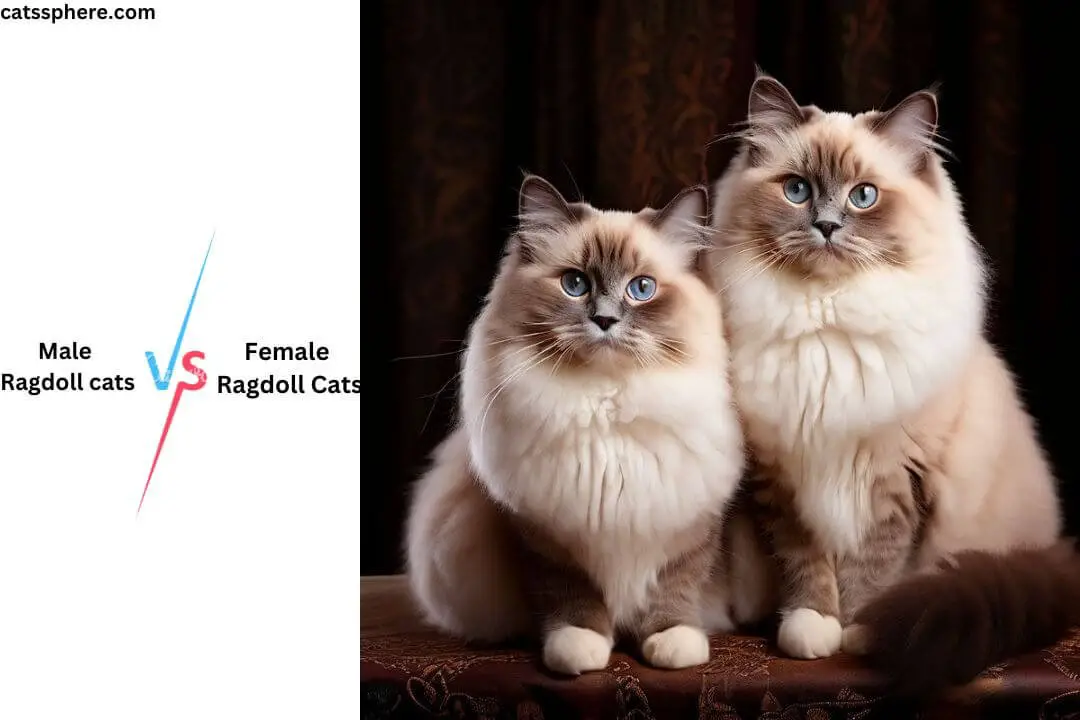Introduction
Ragdoll cats are renowned for their stunning blue eyes, silky coats, and affectionate nature. If you’re considering adding a Ragdoll cat to your family, understanding the differences between Male vs. Female Ragdoll Cats can help you make an informed decision. This guide will delve into the physical, behavioral, and health distinctions between the genders to assist you in choosing the perfect companion.
History of Ragdoll Cats
Origin of the Breed
The Ragdoll breed was developed in the 1960s by Ann Baker in Riverside, California. Baker aimed to create a cat with a docile and placid temperament, and she succeeded. The breed quickly gained popularity due to its unique characteristics and gentle nature.
Development and Popularity
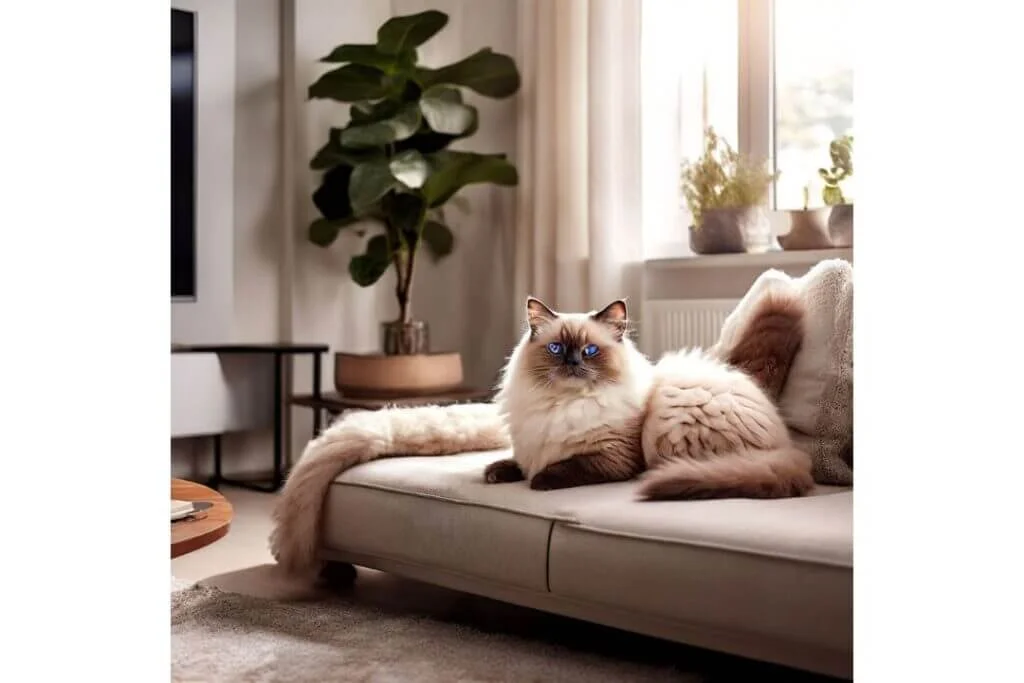
Over the decades, Ragdolls have become one of the most sought-after cat breeds. Their striking appearance and friendly disposition make them favorites among cat enthusiasts. Their calm demeanor and tendency to go limp when held, akin to a ragdoll, are distinctive traits that set them apart from other breeds.
Physical Characteristics
General Appearance
Ragdoll cats are large, muscular cats with a semi-long coat. They have a broad chest, sturdy body, and a full, bushy tail. Their large, expressive blue eyes and soft, plush coat are hallmarks of the breed.
Size Differences
Male Ragdolls are generally larger than females. A fully grown male can weigh between 15 to 20 pounds, while females typically weigh between 10 to 15 pounds. The size difference is noticeable, with males having a more robust and imposing presence.
Coat and Color Variations
Ragdoll cats come in various colors and patterns, including colorpoint, mitted, and bicolor. Both males and females can exhibit these patterns, and their coats require regular grooming to maintain their silky texture.
Temperament and Personality
Typical Traits of Ragdoll Cats
Ragdolls are known for their affectionate and gentle nature. They enjoy human companionship and are often described as “puppy-like” because they follow their owners around the house. Ragdolls are typically not aggressive and get along well with children and other pets.
Differences in Behavior Between Males and Females
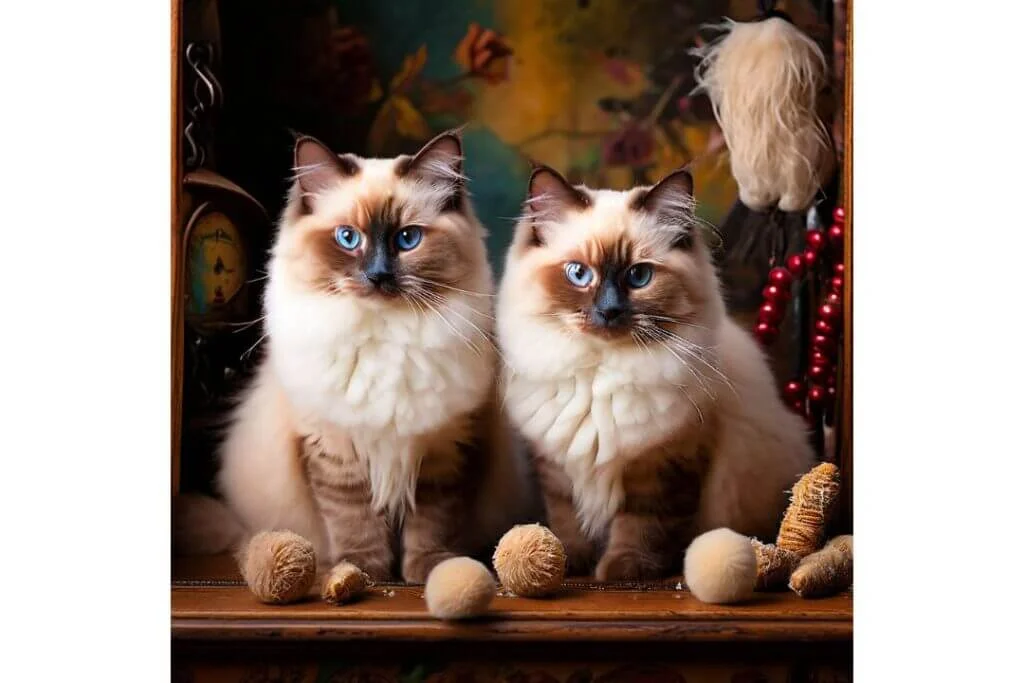
Male Ragdolls tend to be more laid-back and relaxed. They are often more tolerant of handling and may be more affectionate towards their owners. Females, on the other hand, can be a bit more reserved and independent. They may take longer to warm up to new people but are equally loving once they do.
Adaptability to Environment
Both male and female Ragdolls adapt well to different living environments. They thrive in homes where they receive plenty of attention and can engage in play. While males might be more outgoing and adventurous, females often prefer a more stable and quiet environment.
Health and Lifespan
Common Health Issues in Ragdoll Cats
Ragdolls are generally healthy cats, but they are prone to certain genetic conditions such as hypertrophic cardiomyopathy (HCM) and polycystic kidney disease (PKD). Regular vet check-ups are essential to monitor their health and catch any issues early.
Lifespan Expectations
The average lifespan of a Ragdoll cat is between 12 to 15 years, although some can live longer with proper care and a healthy lifestyle.
Gender-Specific Health Concerns
Male Ragdolls may be more susceptible to urinary tract issues, especially if they are neutered later in life. Females may have a higher risk of certain reproductive cancers if not spayed. It’s crucial to discuss these risks with your veterinarian to ensure your cat’s well-being.
Grooming Needs
General Grooming Tips
Ragdolls require regular grooming to keep their coats in top condition. Brushing them two to three times a week can help prevent mats and tangles. Regular grooming also reduces shedding and keeps their fur looking pristine.
Differences in Grooming for Males vs. Females
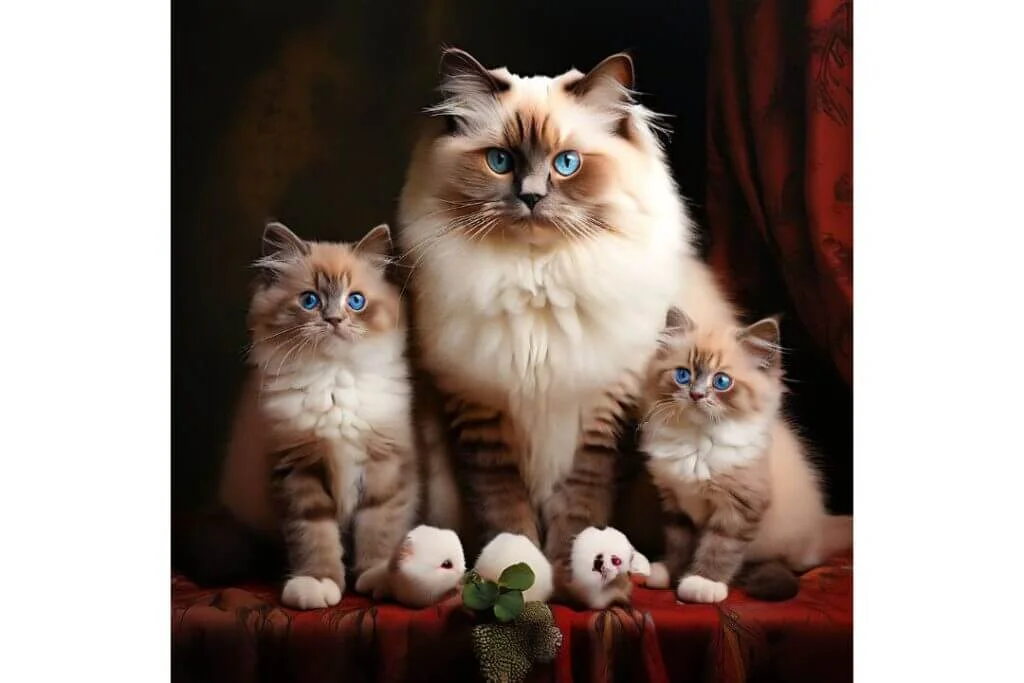
Males tend to have thicker and denser fur, which might require more frequent grooming sessions. Females generally have a slightly finer coat, but both genders benefit equally from regular grooming routines.
Training and Socialization
Training Ragdoll Cats
Ragdolls are intelligent and can be trained to perform simple tasks and tricks. They respond well to positive reinforcement techniques, such as treats and praise.
Social Behavior of Males and Females
Male Ragdolls are usually more sociable and outgoing. They tend to be more playful and enjoy interactive games. Females might be a bit more selective with their social interactions, preferring familiar faces over strangers.
Diet and Nutrition
Nutritional Requirements of Ragdoll Cats
A balanced diet is essential for the health of Ragdoll cats. High-quality cat food that provides a mix of protein, fats, and carbohydrates is ideal. Fresh water should always be available.
Gender-Specific Dietary Needs
While there are no major differences in the dietary needs of male and female Ragdolls, males might require slightly more food due to their larger size. Monitoring their weight and adjusting portions as needed is crucial to prevent obesity.
Breeding and Reproduction
Breeding Considerations for Ragdoll Cats
Breeding Ragdolls requires knowledge of their genetics and health risks. Responsible breeders should ensure that both parent cats are healthy and free of hereditary diseases.
Differences Between Male and Female Breeding Behaviors
Male Ragdolls can be more territorial during breeding, often marking their territory. Females may exhibit more nurturing behaviors and can be very protective of their kittens.
Living with Ragdoll Cats
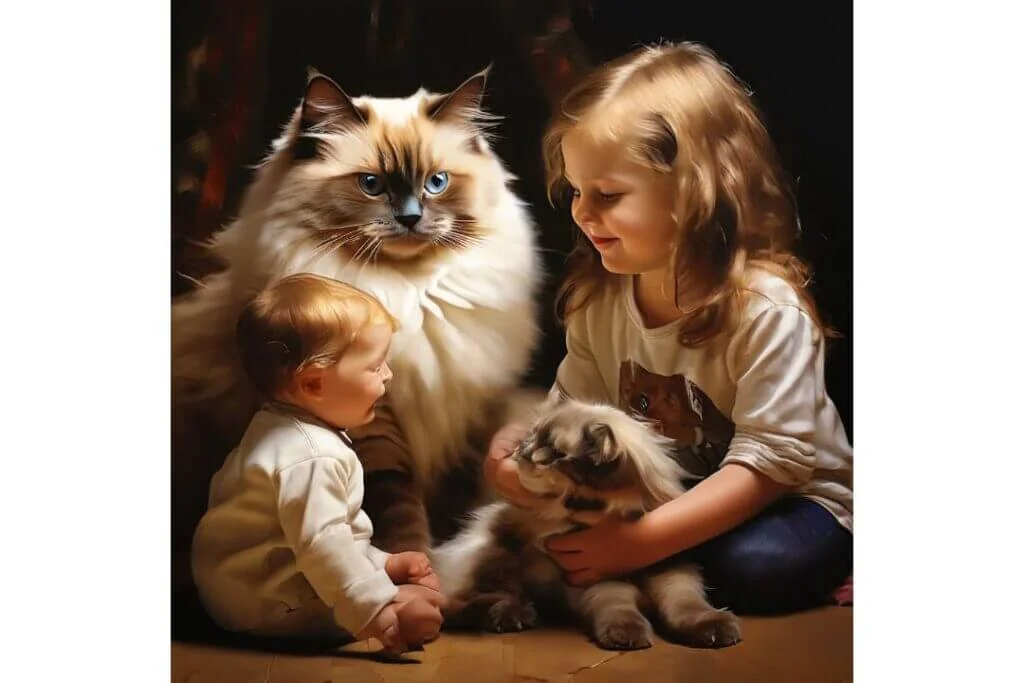
Best Living Environments
Ragdolls thrive in environments where they are part of the family. They enjoy being involved in daily activities and need a safe, indoor space to explore and play.
Interaction with Family Members and Other Pets
Ragdolls are known for their gentle and tolerant nature, making them great companions for families with children and other pets. Male Ragdolls may be more playful, while females might seek out quieter interactions.
Do Ragdoll Cats Have Blue Eyes? Detailed Guide In 2024
Shaving a Ragdoll Cat: A Comprehensive Guide In 2024
10 Bad Things About Ragdoll Cats
Cost of Owning a Ragdoll Cat
Initial Costs
The initial cost of a Ragdoll kitten can range from $400 to $2,500, depending on the breeder and the kitten’s pedigree. Additional initial costs include vaccinations, spaying or neutering, and essential supplies like a litter box, bed, and toys.
Ongoing Expenses
Ongoing expenses include food, litter, regular veterinary check-ups, grooming supplies, and pet insurance. Budgeting for these costs is crucial to ensure your Ragdoll cat remains healthy and happy.
Selecting the Right Ragdoll Cat
Factors to Consider When Choosing
When selecting a Ragdoll cat, consider your lifestyle, living environment, and the amount of time you can dedicate to your pet. Both male and female Ragdolls have unique traits that might make one more suitable for your home than the other.
Male vs. Female Ragdoll Cats Preferences
Some people prefer male Ragdolls for their larger size and laid-back nature, while others might lean towards females for their independence and quieter demeanor. Meeting both genders and observing their behavior can help you make an informed decision.
Common Myths and Misconceptions
Debunking Myths About Male and Female Ragdoll Cats
There are several myths about male and female Ragdolls. For instance, some believe that males are always more affectionate and females are aloof. However, individual personality plays a significant role, and both genders can be equally loving and sociable.
Testimonials from Ragdoll Cat Owners
Experiences of Owners with Male Ragdoll Cats
Many owners of male Ragdolls rave about their cats’ affectionate and playful nature. One owner shared, “My male Ragdoll is like a dog; he follows me everywhere and loves to cuddle. He’s the most loving pet I’ve ever had.”
Experiences of Owners with Female Ragdoll Cats
Owners of female Ragdolls often appreciate their cats’ gentle and calm demeanor. One owner noted, “My female Ragdoll is a sweetheart. She’s more reserved than my male, but she’s incredibly loving and loyal. She loves quiet evenings curled up on my lap.”
Conclusion

Deciding between a male and female Ragdoll cat is a personal decision that depends on various factors, including your lifestyle, living environment, and preferences. Male and female Ragdoll cats each have distinct characteristics that might make one more suitable for you than the other. Male Ragdolls are often noted for their laid-back and cuddly nature, while females can be equally affectionate but may display more independence.
Understanding these differences and considering how they align with your needs will help you choose the perfect Ragdoll companion. Whether you opt for a male or female, both have the potential to bring immense joy, love, and companionship into your home.
FAQs
Do male Ragdoll cats require more grooming than females?
Yes, male Ragdolls typically have denser fur, which can become prone to mats and tangles if not regularly groomed. Therefore, they may require more frequent grooming sessions compared to females to maintain their coat’s condition.
Are female Ragdoll cats more affectionate than males?
Not necessarily. While female Ragdolls can be very affectionate, males are generally known for being more laid-back and cuddly. However, the level of affection can vary widely among individual cats, regardless of gender, with personality playing a significant role.
What are the primary health concerns for male Ragdoll cats?
Male Ragdolls are more prone to urinary tract issues, particularly if they are neutered later in life. These issues can include blockages and infections, which can be serious if not addressed promptly. Regular veterinary check-ups and a proper diet can help manage and prevent these health concerns.
Is there a significant difference in lifespan between male and female Ragdoll cats?
No, there is no significant difference in lifespan between male and female Ragdoll cats. With proper care, both genders typically live between 12 to 15 years. Factors such as diet, healthcare, and living conditions play a more crucial role in their longevity.
How can I decide whether a male or female Ragdoll cat is right for me?
To determine whether a male or female Ragdoll cat is best for you, consider your living environment, lifestyle, and personal preferences. Spend time interacting with both male and female Ragdolls if possible. Observe their behaviors and personalities to see which gender aligns better with your household dynamics and emotional needs. This hands-on approach will help ensure you choose a cat that will thrive in your home and bring you the companionship you desire.

